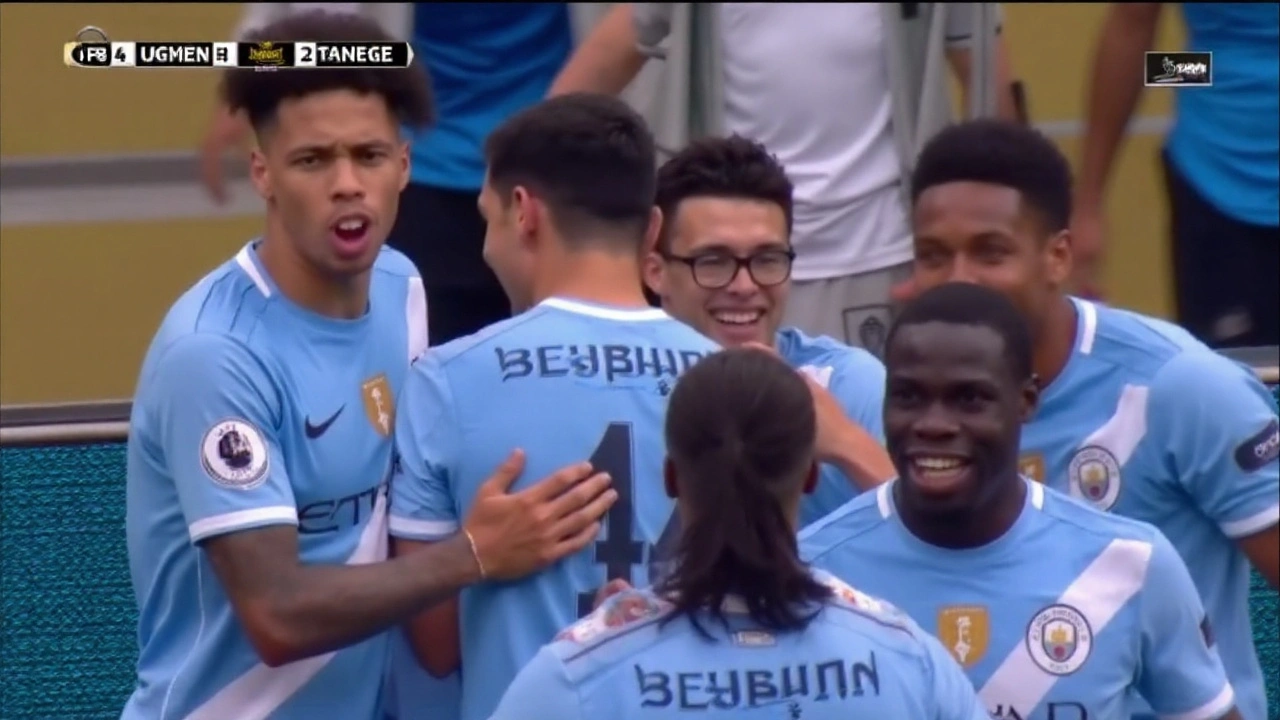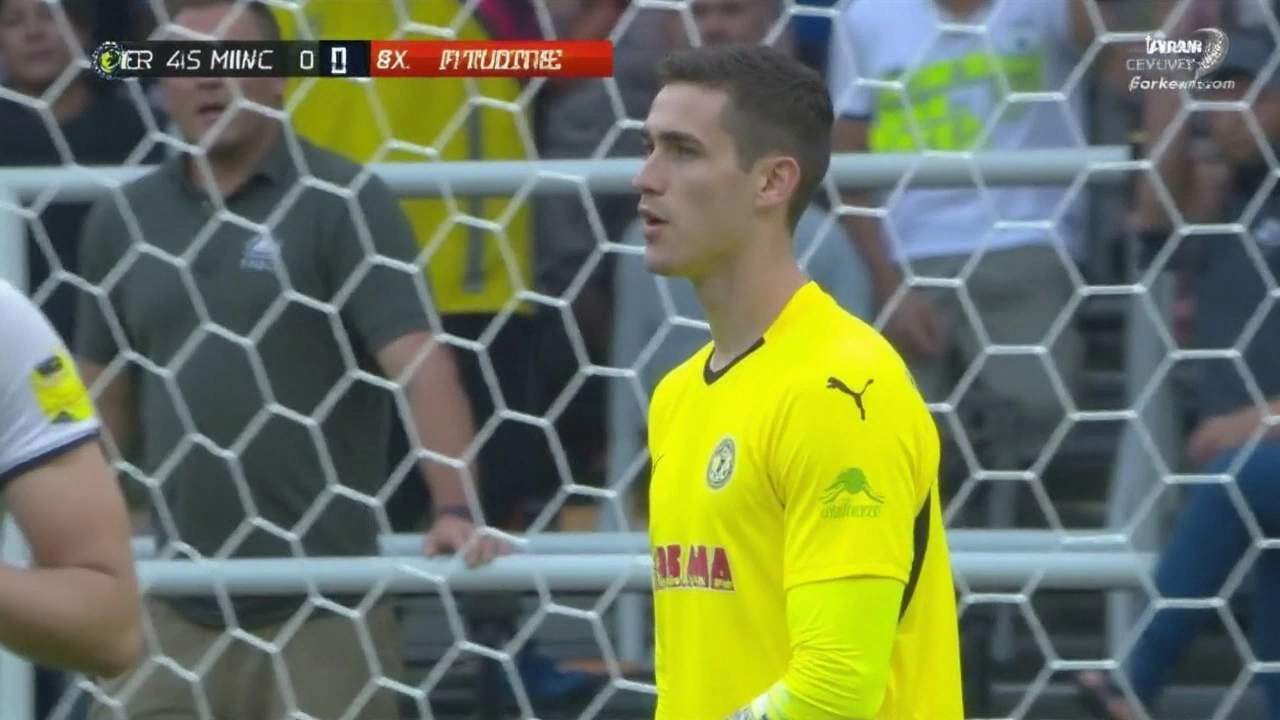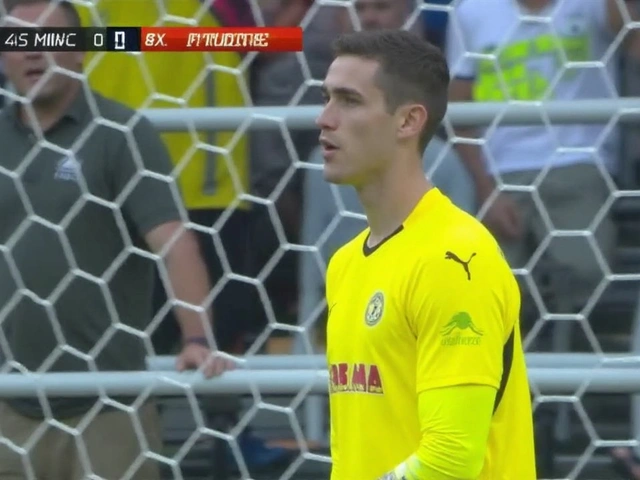A quarterfinal loss that stings—and says a lot
Al-Hilal are out of the 2025 FIFA Club World Cup after a 2-1 defeat to Fluminense in the quarterfinals on July 4. The result cuts short a campaign that carried big expectations, not just for the club but for the Saudi Pro League’s wider project. A win would have pushed the Riyadh giants into the last four of a global tournament that now draws more eyes than ever under its expanded format. Instead, the Brazilian side soaked up the pressure, picked their moments, and moved on.
The story before kickoff centered on whether the Saudi champions might add one more Brazilian face for a “decisive” push. That never happened. There was no confirmed new reinforcement. Al-Hilal went with what they had: a Brazilian core featuring Marcos Leonardo up front, Malcom on the wing, Renan Lodi at left-back, and Kaio Cesar adding depth. On paper, it’s a smart spine—technique, pace, and familiarity with South American rhythms. On the pitch, the margins were thin, and Fluminense made them pay.
The match followed a familiar knockout script: tight midfield duels, a few clear chances, and a tense final phase where one mistake or one moment of quality decides it. Fluminense leaned on cohesion and control. Al-Hilal had flashes, especially in transition, but struggled to consistently open space between the lines. In a tournament like this, where quality is condensed and the clock is cruel, that’s often enough to tilt the outcome.
It’s tempting to chalk this up to an off day. But this exit sits within a bigger picture. Since 2023, Saudi clubs have spent heavily to close the gap with Europe and South America. The strategy: stack technical talent, pair it with athleticism, and bet on quick chemistry. That approach has delivered domestically and in Asia. In a global knockout, though, you meet teams like Fluminense—sides that have played together for long stretches, rotated through high-stakes nights, and built a bank of problem-solving habits. That’s hard to buy on a deadline.

Brazilian backbone, global ambitions, and what comes next
Al-Hilal’s Brazilian thread isn’t a marketing stunt. It’s a tactical choice. Brazilians bring comfort in tight spaces, creativity on the flank, and an instinct for game management when the tempo swings. Marcos Leonardo offers penalty-box timing and pressing energy. Malcom carries the ball at speed and can flip a match with a cut inside. Renan Lodi, when he’s on balance, gives width and reliable service. Kaio Cesar is a project with upside. It’s a sensible blend—but it needs time together, clear roles, and rhythm.
Why didn’t the rumored reinforcement materialize? Timing and tournament rules matter. The Club World Cup’s registration windows are narrow. Integrating a new player days before a knockout game is a gamble: different cues, different lanes, and a new voice in the dressing room. Sometimes the bravest move is not adding one more piece. The coaching staff backed continuity. The result wasn’t what they wanted, but the logic holds.
The bigger challenge is balance. You can’t just collect talented attackers and expect control in the middle third. Against a South American opponent, the battle is often about second balls, rest defense, and how quickly your full-backs recover when the first press is broken. Fluminense were patient, then decisive. Al-Hilal had to chase, and the game opened up on terms that suited the Brazilians.
There’s also the calendar. The expanded Club World Cup piles high-intensity minutes into a short window. That tests depth as much as star power. In tournament football, you need 14 or 15 reliable options, not 11. If one attacker is quiet or a full-back is pinned, the bench has to change the story. That’s where cohesion and roles matter most. A tweak that works in the league might not translate in a neutral-site quarterfinal against a seasoned unit.
So where does this leave the Saudi champions? The exit will sting, but it shouldn’t derail the plan. The recruitment focus won’t just be “more firepower.” Expect attention on midfield control—players who can set the tempo under pressure—and a flexible defensive setup that doesn’t get stretched by quick switches. The Brazilian core isn’t the problem; it’s the base. The task now is to mesh that flair with a calmer center and a tighter back line in early transitions.
For the Saudi Pro League, this is a reality check, not a dead end. Money can close gaps fast, but collective habits are built in matches like this. The league’s next milestone isn’t another headline signing; it’s a team that arrives at this stage, looks comfortable in chaos, and turns a one-goal game their way. Al-Hilal are close, but not there yet.
Fluminense, meanwhile, move on with the kind of confidence that comes from winning a hundred small duels. They didn’t overwhelm; they outlasted. They played the moments better. And in a global quarterfinal, that’s usually enough. The bracket won’t get easier for them, but this win says their fundamentals travel well.
Back in Riyadh, the postmortem will focus on details: zones conceded on the counter, how quickly the ball reached the front line, set-piece delivery, and the timing of substitutions. Those are fixable. The roster has quality, the resources are there, and the experience of this tournament—short, sharp, unforgiving—will sit in the locker room all season.
No last-minute Brazilian reinforcement came through. It turns out the bigger reinforcement Al-Hilal need isn’t a new face. It’s repetition, roles, and a little more calm when the match tilts. The Club World Cup just made that painfully clear.




Comments
Look, the Saudi project is a fiscal artillery barrage, not a home‑grown football philosophy. You can dump cash on marquee Brazilians, but without a coherent pressing schema you end up with a bunch of talent that drifts like artillery shells without a target. The quarter‑final loss is a textbook case of what happens when you prioritize star power over tactical cohesion – the ball is turned over, the midfield gaps widen, and the opponent exploits the lack of a disciplined back‑four. Al‑Hilal’s Brazilian spine looked flashy on paper, yet you need a unified defensive line that can compress space and a midfield engine that can control tempo under pressure. Otherwise you’re just buying insurance that never pays out when the pressure cooker turns on you.
The whole narrative around Al‑Hilal’s “Brazilian core” is a textbook example of hype over substance. You parade a few well‑known names and then act surprised when a well‑drilled South American side out‑maneuvers you. The decision‑making at the top looks more like a marketing exercise than a genuine footballing strategy. Their failure to adapt mid‑game, coupled with a lazy defensive transition, underscores a deeper structural issue – you can’t substitute chemistry with cash.
interesting how the squad looked solid on paper but struggled when the ball left the box its like they missed the memo on tight‑marking
still gotta give credit to Fluminense for staying calm and exploiting those tiny lapses they were ready for
Hey team, keep your heads up! Every setback is a lesson, and you’ve got the talent to bounce back. Trust the process and keep grinding – the next tournament could be yours!
Loved the way Fluminense kept the tempo low and waited for that perfect opening 😊 It shows that patience can beat flash any day.
While the outcome was disappointing, the effort displayed by the Brazilian contingent remains commendable. Future tactical adjustments should focus on defensive solidity and transitional speed.
Quick tip: next time, work on set‑piece routines – a well‑practised corner can be the difference. ⚽️💡 Also, a bit more squad rotation could keep the legs fresh.
Oh sure, because spending billions on a handful of players totally guarantees glory – classic. The drama of watching a well‑coordinated side dismantle a cash‑rich “superteam” is just priceless.
Meh, same old story.
When dissecting the tactical DNA of this encounter, one must first acknowledge the metaphysical underpinnings that govern high‑stakes competition. The premise that a concatenation of individual brilliance can supersede the collective consciousness of a well‑synchronised unit is, at best, a romantic fallacy. Fluminense entered the arena not merely as a contingent of skilled athletes but as a living organism whose neural pathways have been refined through countless high‑pressure engagements. Their positional discipline manifested as a series of micro‑adjustments, each one calibrated to the subtle shifts in Al‑Hilal’s spatial configuration. Meanwhile, the Saudi side exhibited moments of temporal dissonance, where the cadence of their passes lagged behind the rhythmic pulse dictated by the Brazilian flank. The failure to maintain a compact midfield triangle allowed the Brazilian core to exploit inter‑zone gaps, turning what could have been a congested midfield into an open canvas for precision passes. Moreover, the psychological inertia of a newly assembled squad cannot be overlooked; the lack of shared narrative threads within the dressing room translated into a deficit of on‑field intuition. In contrast, Fluminense’s shared history provided an implicit decision‑making matrix that operates faster than any explicit tactical briefing. The conclusion, therefore, is not merely that Al‑Hilal needed another Brazilian signing, but that they require a holistic integration strategy that fuses tactical frameworks with cultural assimilation. Only then can the volatile alchemy of star power resolve into a stable, winning formula.
Honestly, the whole spectacle is a reminder that you can’t buy intellectual rigor with a bank‑roll. When the opposition possesses a philosophy forged in the crucible of adversity, no amount of glittering CVs can compensate for the lack of cerebral depth. Fluminense’s victory is a masterclass in footballing epistemology, whereas Al‑Hilal’s approach smacks of superficial ostentation.